|
In my last post I wrote about Haile Selassie, Emperor of Ethiopia from 1930-1974. In this post I will explore the link between Selassie and the Rastafarian religion.
The Rastafari movement developed in the impoverished black community of Jamaica in the 1930's as a reaction against their then dominant British Colonial culture. They visioned an idealized Africa, putting their attention on the oppression of the African diaspora in Western society, referred to as "Babylon". The Rastafari movement is both a religion and a political movement with several denominations, each with a different interpretation of beliefs. There are believed to be between 700,000 to 1,000,000 Rastas across the world, with the largest population in Jamaica. Rastafari culture has inspired many reggae musicians including Bob Marley. Rastas believe in a single God, called Jah, believed to have come in the form of a man several times, including as Jesus. They also believe that the black race is one of the tribes of Israel. Many of them call for a resettlement in Africa, especially Ethiopia, which is considered their homeland and Zion. Some of their unique traditions include the smoking of Ganja (cannabis), considered a spiritual purifier, living naturally (no pork, shellfish, alcohol, coffee, or cigarettes), and the prohibition of cutting hair. So what was the connection to Haile Selassie, known as Ras Tafari Makonnen before his coronation, and from whom the movement gets it's name? In 1920, shortly before Selassie's coronation, Marcus Garver, a Jamaican black nationalist made a prophecy. "Look to Africa where a black king shall be crowned, he shall be the redeemer." Although he himself stated he was fully human, Selassie's divinity was declared by the Rastafarians. Many regard him as both God and king, while others think of him as a human prophet. For most Rastas, Haile Selassie is the God of the black race. In 1966, Haile Selassie arrived to the island of Jamaica for a visit. He was completely overwhelmed by the unexpected reception of the one hundred thousand Rastafarians that came to greet him at the airport! Emperor Haile Selassie told the Rastafarians they should not immigrate to Ethiopia until they had found freedom in Jamaica. Selassie showed special favor to the Rasta community in 1948 when he set aside land at Shashamane, Ethiopia for Rastas and others in the Diaspora to repatriate. He visited their settlement several times before the coup ended his reign in 1974.
2 Comments
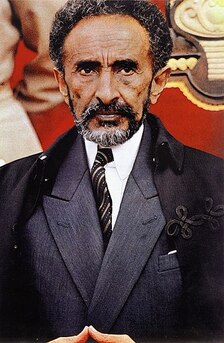 Emperor Haile Selassie Emperor Haile Selassie I must admit that I knew very little about the life of Haile Selassie before I wrote my children's book, The Big Buna Bash. My book, a story about an Ethiopian/American girl, needed an endorsement that would bring credibility to the Ethiopian community. I was very blessed to connect with HIH Joel David Makonnen Haile Selassie, the great-grandson of the last Emperor of Ethiopia, Haile Selassie! Joel was kind enough to write a sweet, sensitive endorsement for The Big Buna Bash, which can be found on the back cover. And ever since, I can't learn enough about this defining figure in history who ruled Ethiopia from 1930-1974. So who was this man who led the social, economic, and political advancement of Ethiopia, established the Organization of African Unity, and became known as a prophet and messiah of the Rastafarian religious movement? Haile Selassie was born Lij Tafari Makonnen on July 23, 1892 in Ejersa Goro, Ethiopia. He was a member of the Solomonic dynasty who traced his lineage back to Emperor Menelik I. His father, Makonnen Wolde-Mikael Gudessa was a general in the Ethiopian army, govenor of the Harar province. and a cousin of Emperor Menelik II. His mother, Yeshimebet Mikael, died when Selassie was 18 months old, giving birth to one of his siblings. Tafari, as he was known in his early years, was educated at home by French missionaries. Before long, his father began to recognize his son's abilities. At age 13, he made him commander of the Ethiopian local militia. Then a year later, when his father passed away, he was entrusted to the care of Menelik II who made him governor of the province of Sidamo . In 1911, Selassie married Menen Asfaw and bore six children. He already had a daughter, Princess Romanework, from a previous relationship. In 1916 he was crowned Prince, Regent, and heir to the throne. Haile Selassie worked to modernize Ethiopia following the course of Menelik II . In 1923 he promised an end to slavery (although it continued for a few more years), thus allowing Ethiopia to become a charter member of the League of Nations. He toured the Middle East and Europe on diplomatic missions and was the first Ethiopian leader to travel beyond the borders of Ethiopia. In 1928 Selassie was proclaimed "King of Kings" or 'Emperor'. Finally in 1930, Selassie was crowned Emperor of the Empire of Ethiopia. He was Time Magazine's 'Man of the Year' in 1935. As Emperor, Selassie introduced the country's first printed constitution, the first step towards democracy and making provisions for the re-Africanization of Ethiopia. Three years later, Italian forces invaded Ethiopia under orders of Mussolini. Selassie mobilized an army. The battle lasted several months and the Ethiopian army suffered heavy losses. The Italian forces took Addis Ababa in 1936 and Mussolini declared that Ethiopia was an Italian province. Selassie and his family spent the occupation in exile in England, where he wrote his memoirs. He turned to the international community and United Nations for assistance and with the beginning of WW II, got British assistance in forming an army of Ethiopian exiles in the Sudan. In 1941, British and Ethiopian forces invaded Ethiopia, recaptured Addis Ababa, and defeated the Italian occupiers. Haile Selassie regained his throne! On May 5th, 1941, Haile Selassie entered Addis Ababa and personally spoke to the Ethiopian people. “It is good that you are here to record this picture of me in my palace garden at Addis Ababa. People who see this throughout the world will realize that even in the 20th century, with faith, courage and a just cause, David will still beat Goliath.” Over the next two decades, Selassie attempted to reform Ethiopia's governmental structure by introducing taxation on church properties, abolishing slavery, and resolving ethnic conflicts. It was Selassie's 1963 speech to the United Nations that inspired Bob Marley's hit song "War". "On the question of racial discrimination, the Addis Ababa Conference taught, to those who will learn, this further lesson:that until the philosophy which holds one race superior and another inferior is finally and permanently discredited and abandoned; that until there are no longer first class and second class citizens of any nation; that until the color of a man’s skin is of no more significance than the color of his eyes; that until the basic human rights are equally guaranteed to all without regard to race; that until that day, the dream of lasting peace and world citizenship and the rule of international morality will remain but a fleeting illusion, to be pursued but never attained. In 1974, a military branch called the Derg, staged a coup against Selassie, then in his 80's. They sent him to house arrest while members of his family were imprisioned and many of his former government officials executed. On August 27, 1975, at the age of 83, Haile Selassie died in his own palace. The official story is that he died of respiratory failure, but in the 1990s an Ethiopian court announced that he had been strangled in his bed by members of the coup. The Derg was overthrown in 1991, and a year later, Selassie's bones were found under a slab in the Imperial Palace. 25 years after his death, Selassie was given a full state funeral and buried in Holy Trinity Cathedral. In my next post, I'll discuss the fascinating story of the Rastafarian Movement. The Society of Children's Book Writers and Illustrators offer a Bookstop Page for it's members who have authored children's books published in 2020. Take a look at The Big Buna Bash page!
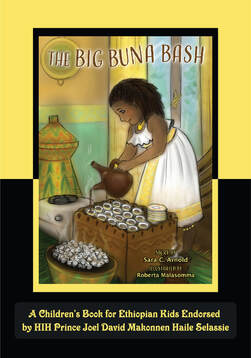 Diverse/Multi-cultural Children's Book Diverse/Multi-cultural Children's Book If you love coffee, then you'll love The Big Buna Bash, a multi-cultural children's book about empathy, acceptance, and the Ethiopian buna coffee ceremony! Teach your children/students about traditions different from their own! Order it on Amazon with the link below!TBigBash, a new chn's book celebrating the Ethiopian coffee ceremony. Find out how Almaz learns that buna brings people together! Endorsed by HIH Prince Joel David Makonnen Haile Selassie and sponsored by Ethiopian Airlines! Perfect to teach your child about feeling different and acceptance/inclusion. Take a look.....https://www.amazon.com/Big-Buna-Bash-Sara-Arnold/dp/1951565010 XMA Header Image The Big Buna Bash, a new children's book celebrating the Ethiopian coffee ceremony. Find out how Almaz learns that buna brings people together! Endorsed by HIH Prince Joel David Makonnen Haile Selassie and sponsored by Ethiopian Airlines! Perfect to teach your child about feeling different and acceptance/inclusion. Take a look..... Header Imag I must admit that I had to acquire a taste for Tella, but it's smooth flavor soon won me over!
Tella is the Ethiopian beer, believed to be over 10,000 years old, that is the most popular alcoholic drink in Ethiopia. As diverse as Ethiopia itself, there are many varieties of Tella. It can be brewed with barley, wheat, millet, surghum, or teff. Gesho leaves, from a local Ethiopian bush, are also used in Tella production. The process is similiar to the making of store bought beer in that the grain starch is converted into sugars by malting. The difference is that with Tella, there is no added yeast for fermentation as it uses the natural yeast that is present in the grain. A home in Ethiopia signals that it brews tella by placing a colored rag on an upright pole in front of the house. That way, people passing by can stop in for a cheap drink and good conversation! If you like trying new varieities of home brew or are just a craft beer lover.....Tella is an interesting discovery! The Big Buna Bash was honored to receive 2nd place for cultural diversity in the Purple Dragonfly Book Awards!
The Big Buna Bash will soon be out in two additional languages: Hebrew and Amharic! Why Hebrew? Because Israel is my home! The Ethiopian Jewish community brought their tradition of buna with them from Ethiopia to Israel. That's how I learned the magic of buna! Why Amharic? For the kids in Ethiopia! I want them to be able to read The Big Buna Bash in their own mother tongue. These new versions will be marketed by Brandylane Publishers, alongside the original English version.
In Ethiopia, coffee is a way of life! Ethiopians have been drinking coffee from the earliest times. But they aren't the only place with a strong coffee culture. All over the globe, coffee-lovers are consuming and preparing coffee in different ways! For instance, Italy gave the world the terms that have become universal in coffee ordering: americano cappuccino espresso latte macchiato mocha latte Italy also has some of the oldest operating cafes in the world. The Netherlands boasts "koffie verkeert" or "coffee wrong", a cafe au lait served in a glass cup. Vietnamese coffee is made in a personal drip pot and served with sweetened condensed milk. In Australia, quality wins over quantity! The Austrailian silky shiny latte makes coffee-making an art with perfectly frothed milk. Starbucks didn't survive for long in Australia! In India, coffee culture is a relatively new thing! The Indians usually drank their coffee with milk so the quality of the coffee wasn't so important, as the milk masqued it's flavor. Indains start their day with a big tumbler of strong filter coffee with boiled milk and sugar added. In Turkey, coffee grounds are boiled and served black and bubbly in ornate cups! Cuba has "Cortodito", a sweetened espresso with seamed milk. Korean coffee consumption is on the rise! Coffee didn't arrive there until 1896 when King Gojong first tried it and spread the word. A popular coffee in Korea is called "Dalgona", a cold latte with a sweet, bitter coffee foam on top.
Here is a collection of artwork depicting the Ethiopian buna coffee ceremony. I regret that I can't give credit to the artists as I don't know their sources.
Enjoy! If you've been to the Big Buna Bash Facebook page, you know that I collect images of the buna ceremony.
Buna has many faces, and it really does bring people together! So here are ten of my favorites: |
AuthorI had so much fun writing The Big Buna Bash, and I want to share it to inspire cultural pride in kids who might feel like they don't fit in because of their differences. I believe in diversity and inclusion; that's why I wrote The Big Buna Bash! Archives
November 2020
Categories |
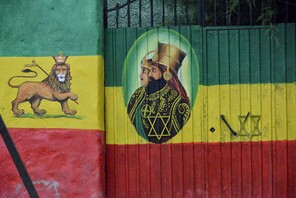
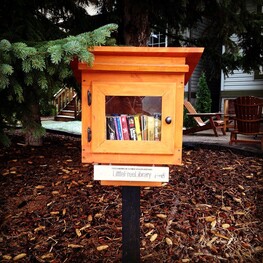

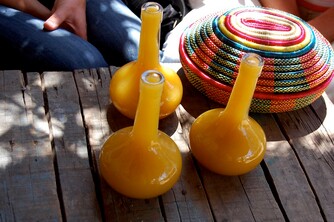
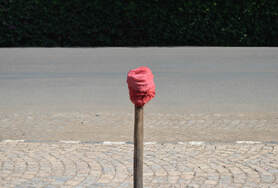
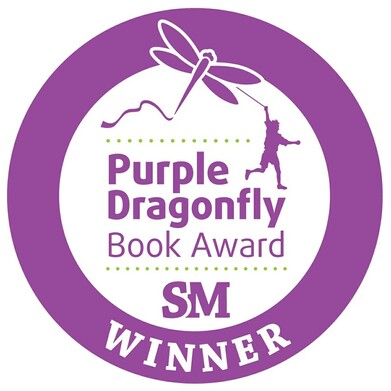
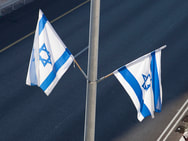
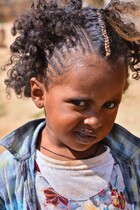
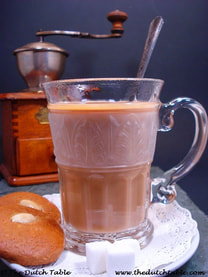
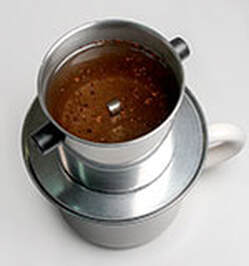
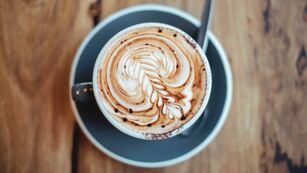
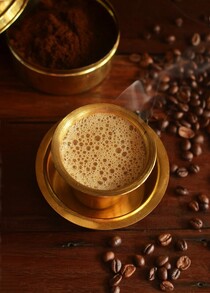
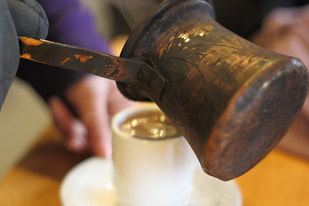
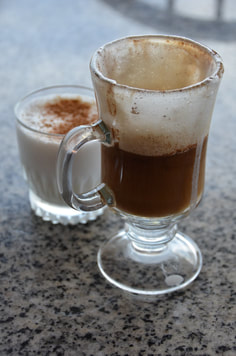
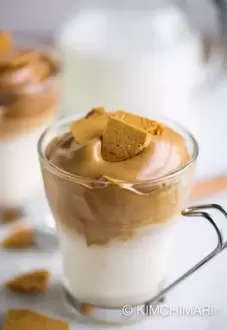
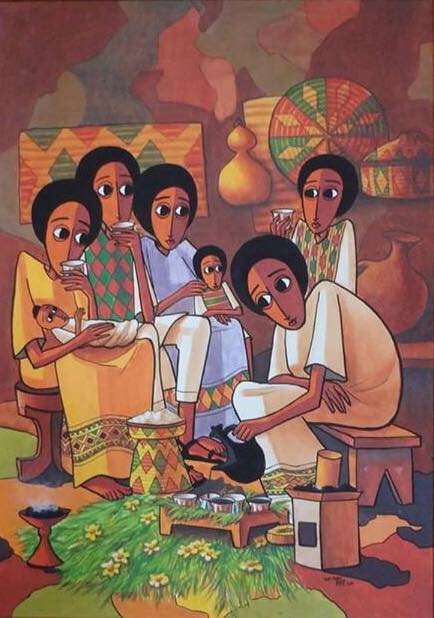
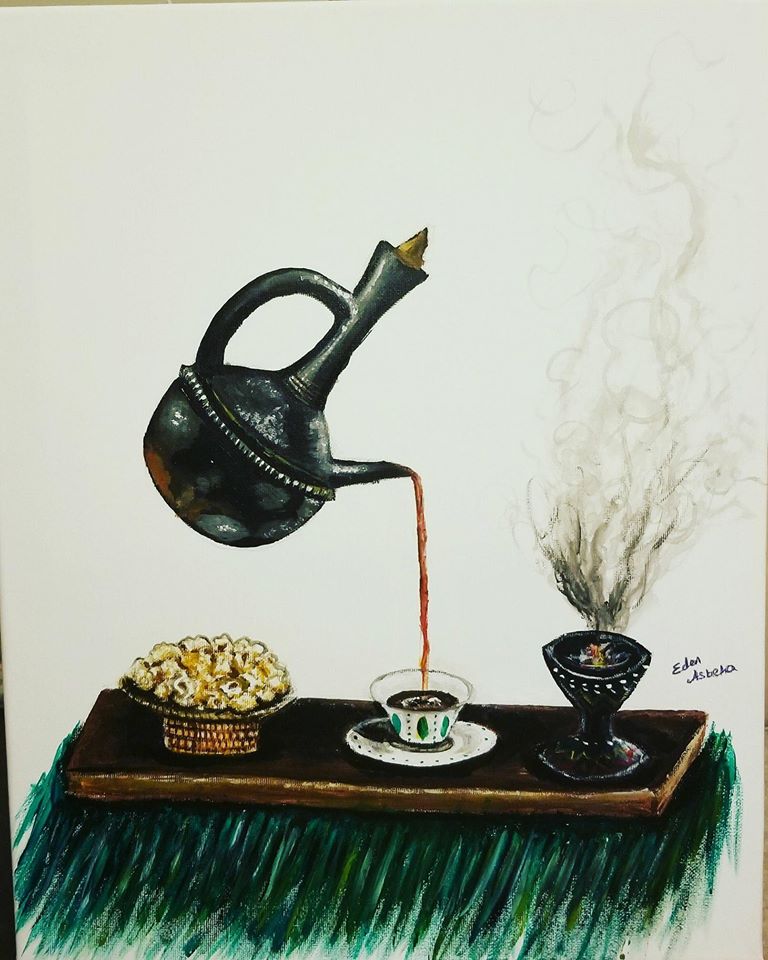
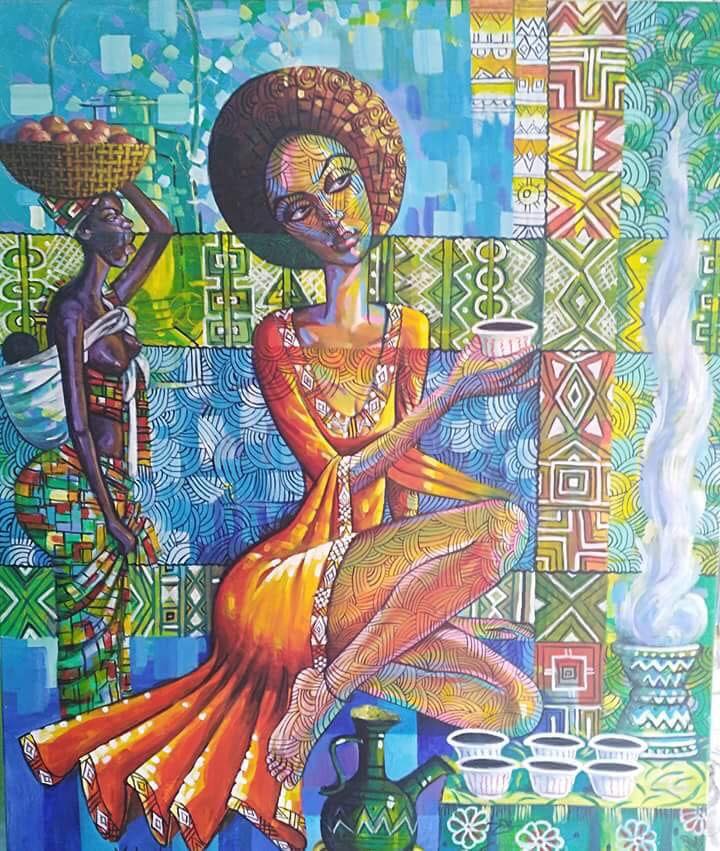
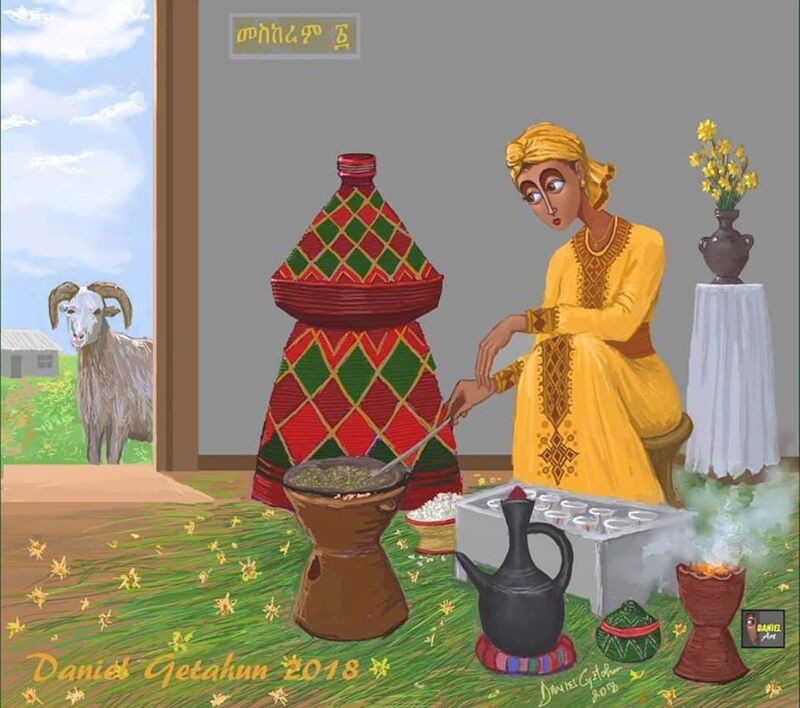
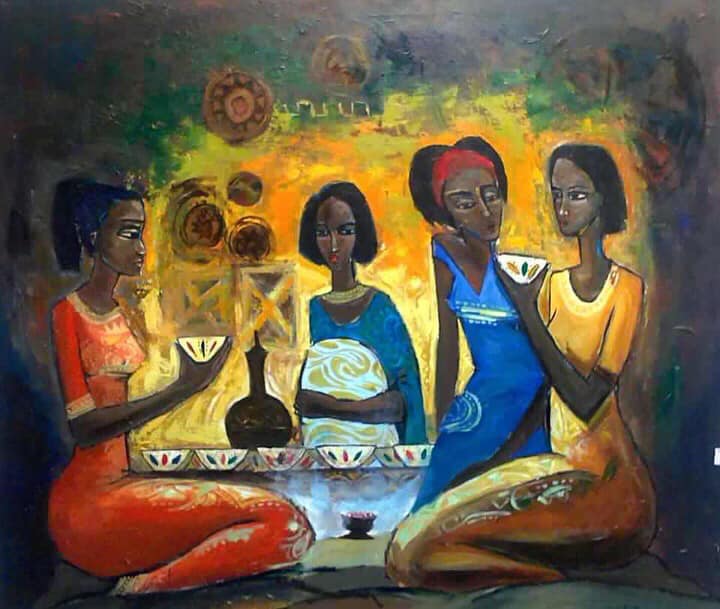
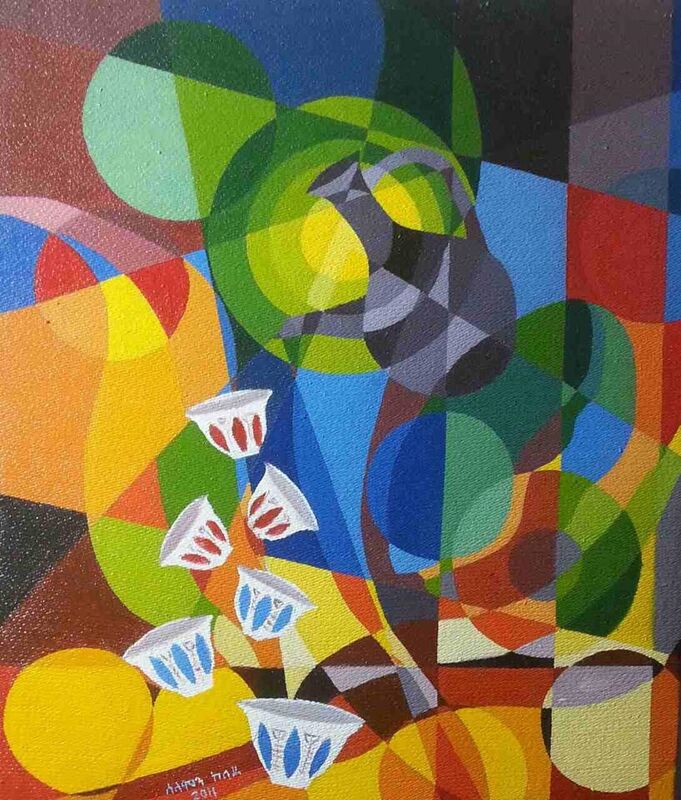
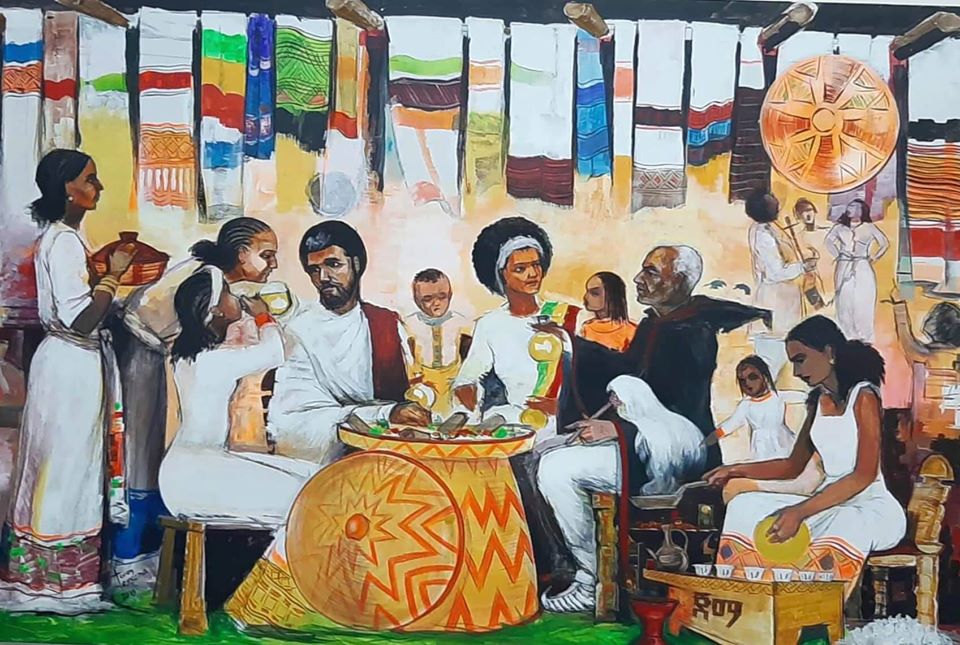
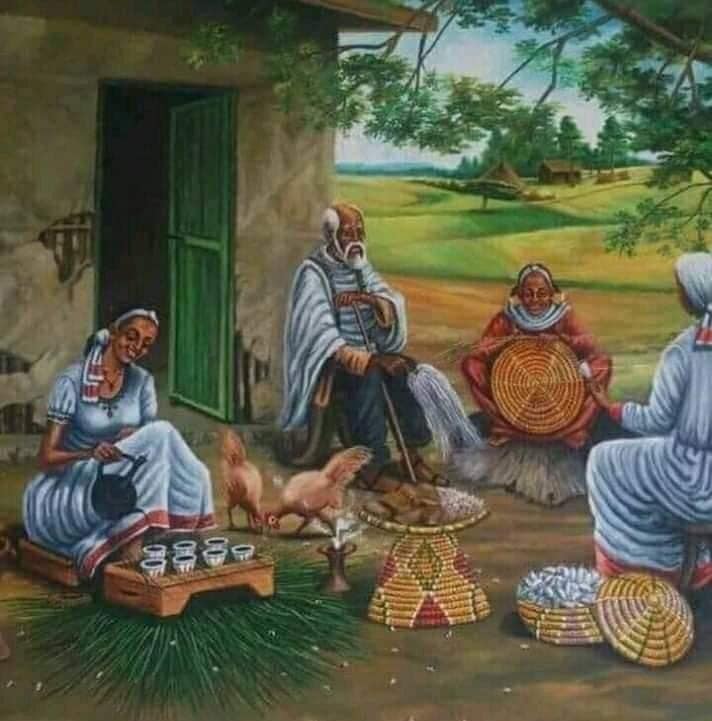
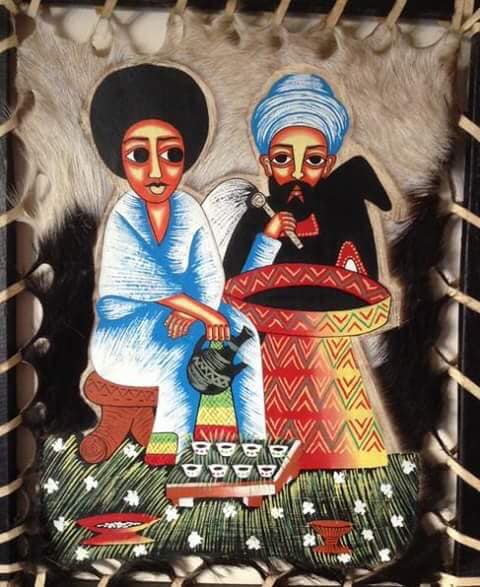
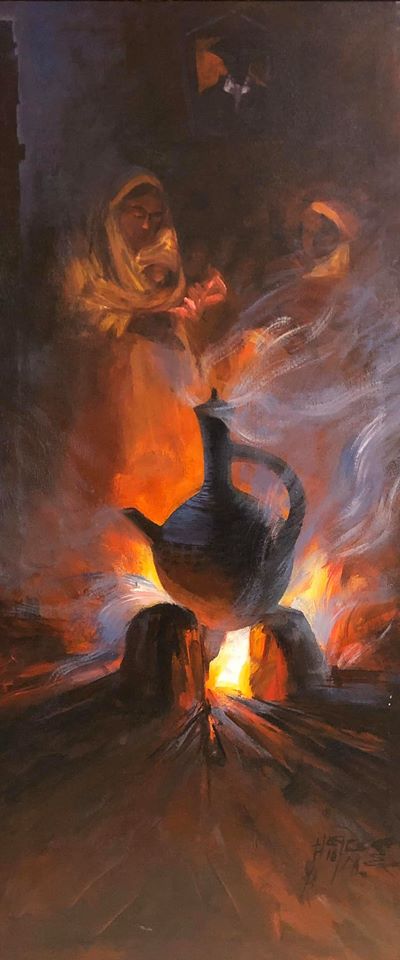
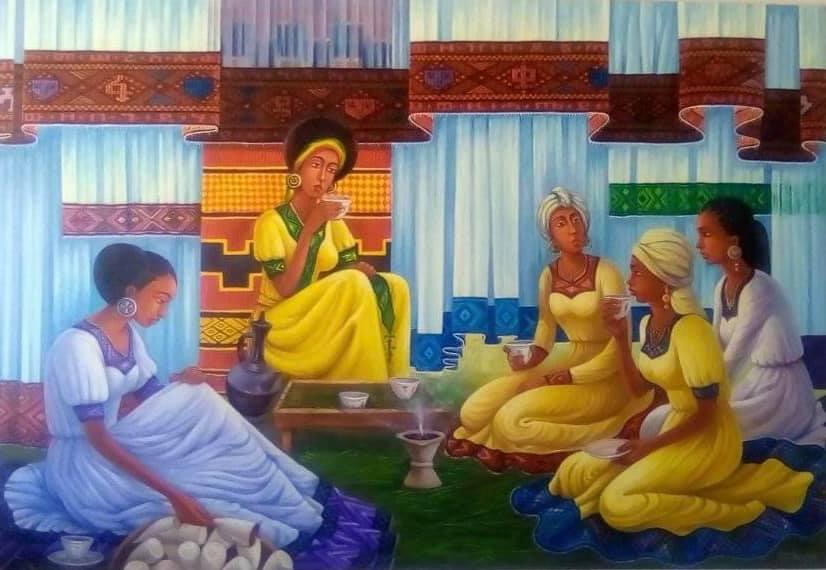
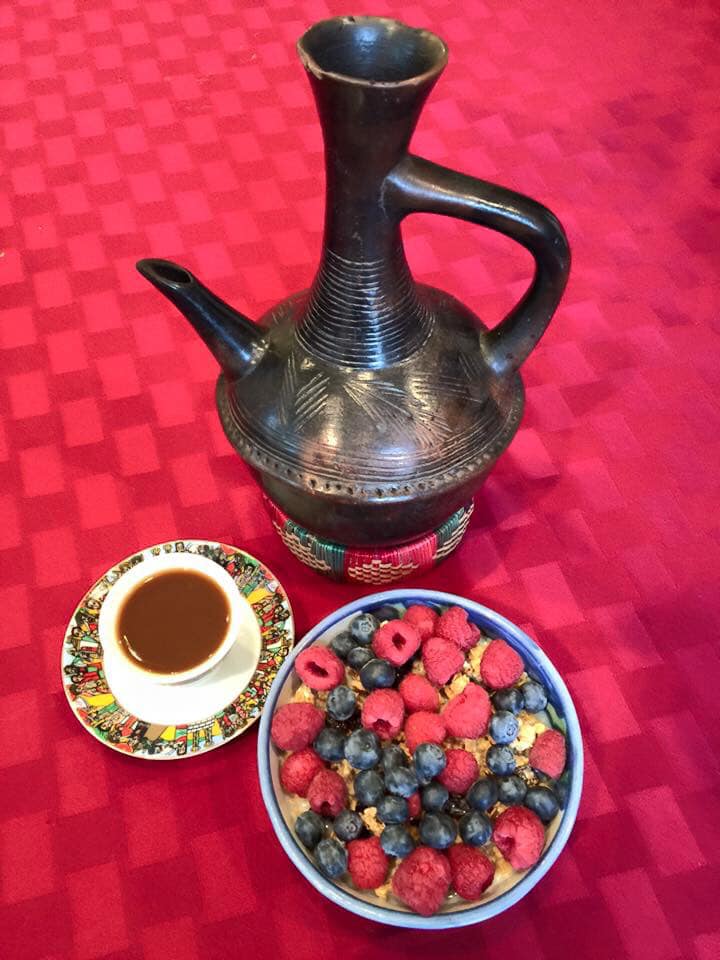
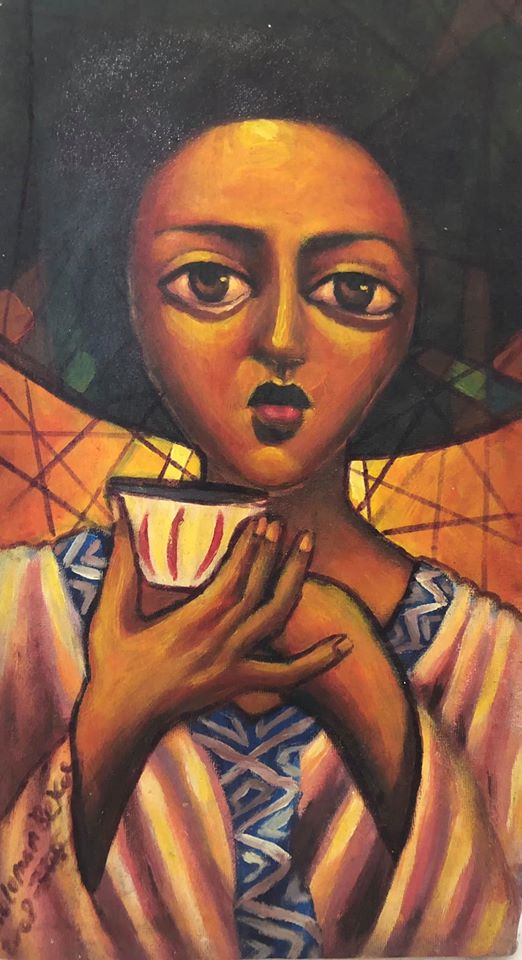
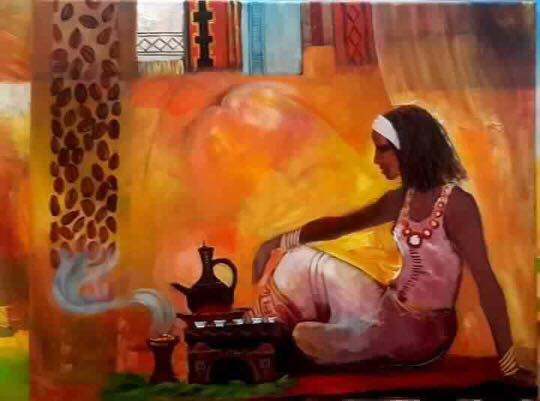
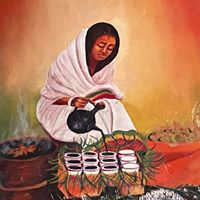
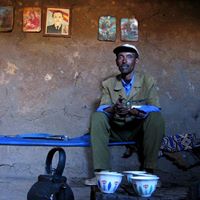
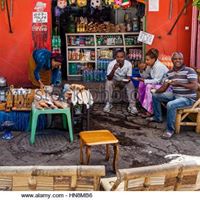
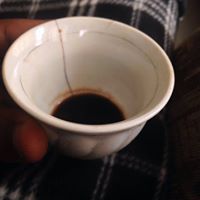
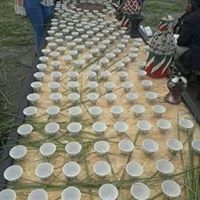

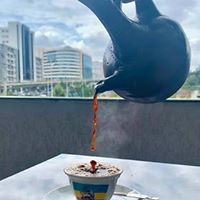
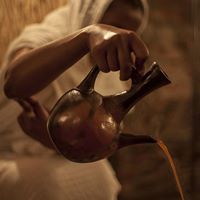
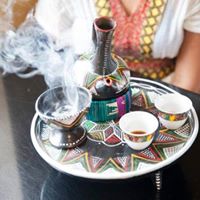
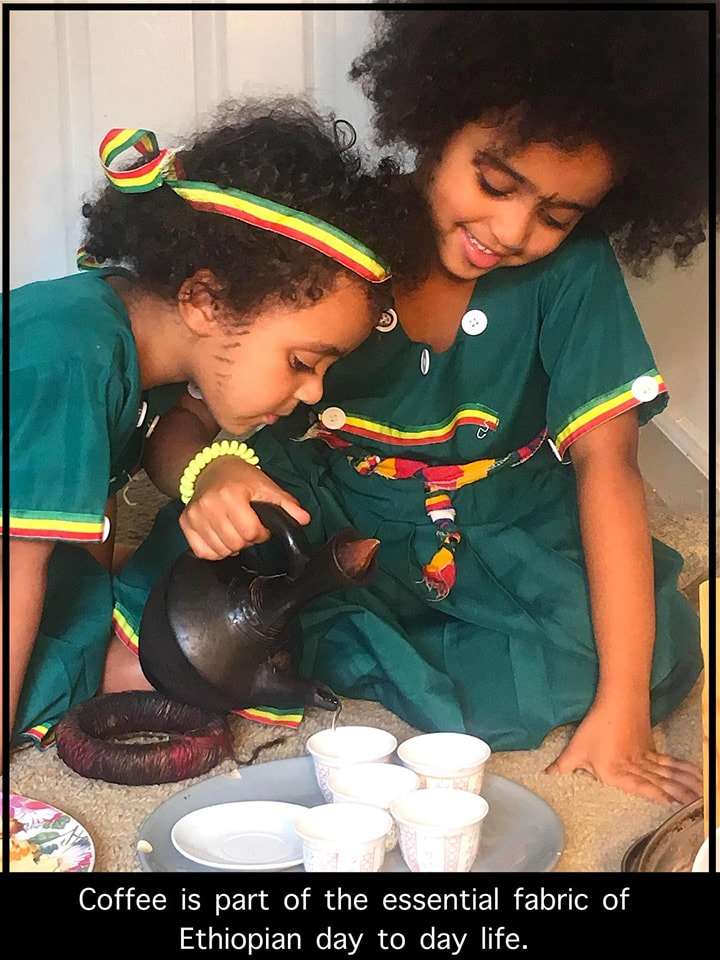
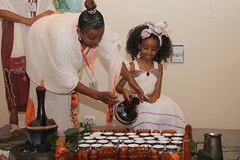
 RSS Feed
RSS Feed
